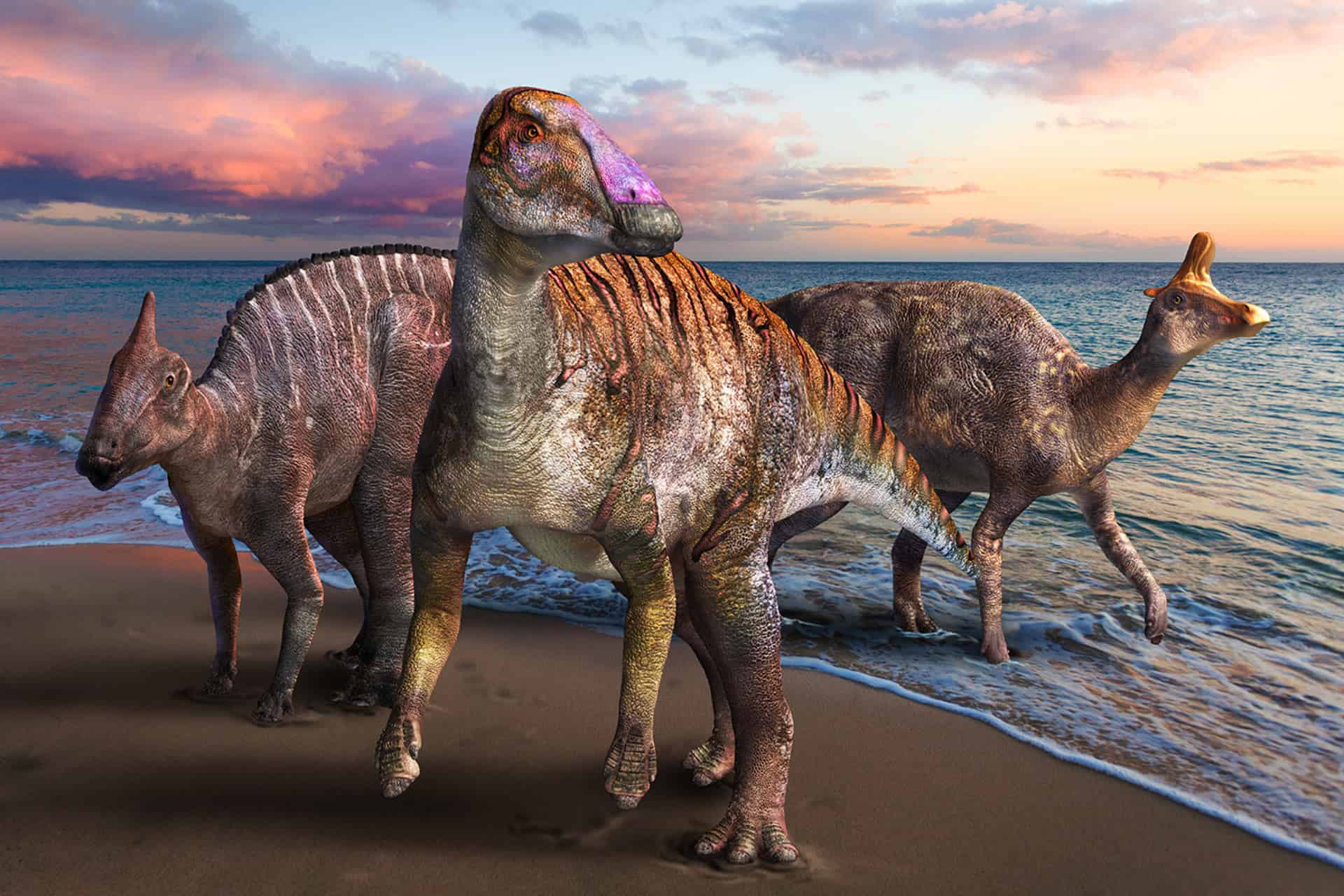
The Hadrosaur is one of the most imposing and intriguing dinosaurs out there, but unfortunately, it’s not as well known as a more popular dinosaurs.
Imagine stepping into a time machine and traveling 80 million years back. You find yourself in what is now North America, but it’s a world unrecognizable—lush, tropical, and teeming with life forms that defy imagination. Of course, we’re talking about dinosaurs.
Among these amazing creatures, you’d probably recognize one or two. A tyrannosaur should be easily recognizable, should you have the misfortune to see one. A triceratops is also easy to spot, as are a number of long-necked dinosaurs. But among the common dinosaurs, one group stands out: the Hadrosaurus.
Discovering a surprising dinosaur
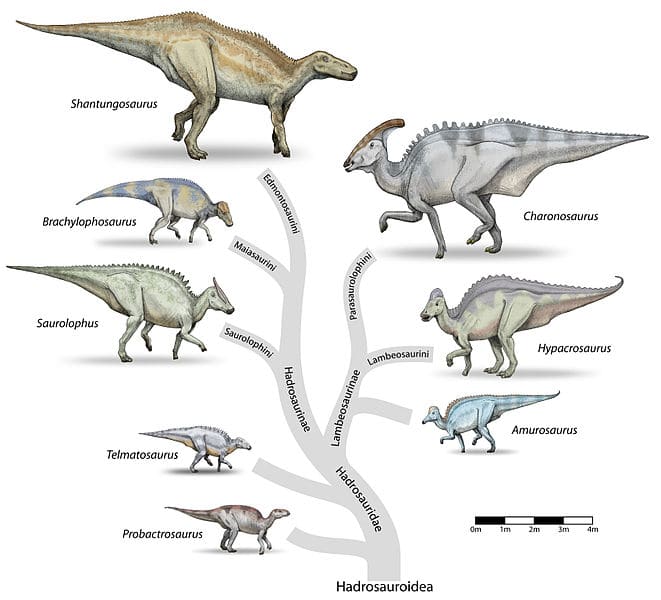
The Hadrosaur is one of the earliest dinosaurs described scientifically. But this journey was not straightforward.
In the 1850s, fossil hunters across North America were discovering some rather stunning fossils. This culminated when William Parker Foulke, an attorney and amateur paleontologist affiliated with Philadelphia’s Academy of Natural Sciences, took a vacation to New Jersey in 1858. During his trip to Haddonfield, Camden County, he learned that 20 years before, some large bones were discovered at a nearby farm.
Foulke explored the area and found a promising marl pit where he directed a careful excavation. That’s where he found some of the most important early Hadrosaur fossils, documenting almost half of the dinosaur’s skeleton.
Within ten years, naturalists and early paleontologists had confirmed that this was indeed a new dinosaur and described it scientifically. The entire skeleton was completely assembled in 1868 and was displayed at the Philadelphia Academy of Natural Sciences.
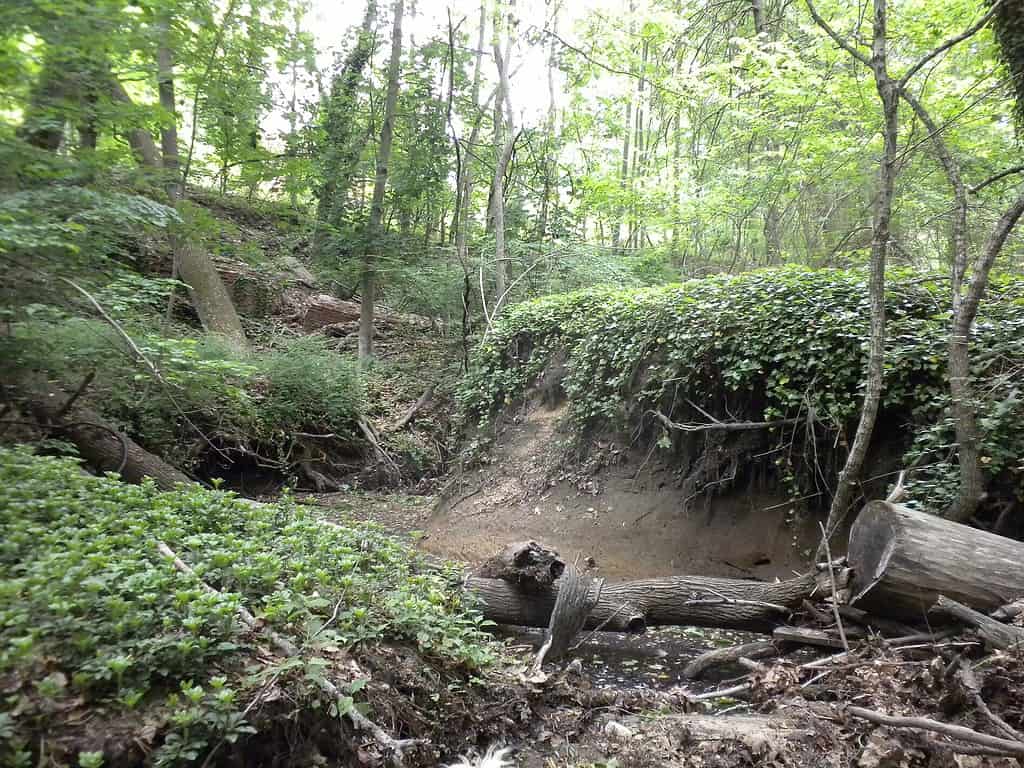
The first dinosaur to stand in a museum
The fossil showcase marked an important moment in the history of biology and geology: it was the first dinosaur to be mounted in a museum. For the first time, people could see a dinosaur as it might have appeared in life, standing tall on its hind legs. It was a sight to behold!
This exhibit wasn’t just a spectacle; it was a scientific milestone. It provided the public with a tangible connection to Earth’s distant past and inspired a new generation of paleontologists to dig deeper into the mysteries of prehistoric life.
Why was this find so revolutionary? Until then, scientists had a rather limited view of what dinosaurs looked like. Most thought of them as quadrupedal, lizard-like creatures. The Hadrosaurus shattered that stereotype. It was bipedal, meaning it walked on two legs, and its unique features suggested a far more diverse dinosaurian world than anyone had imagined.
Curiously enough, the site where the fossils had been found fell into obscurity for the most part. This lasted until 1984 when a local Boy Scout researched the site and generated publicity. This garnered a lot of support and ultimately led to the Hadrosaur becoming the official dinosaur of New Jersey.
Hadrosaur biology and fossils
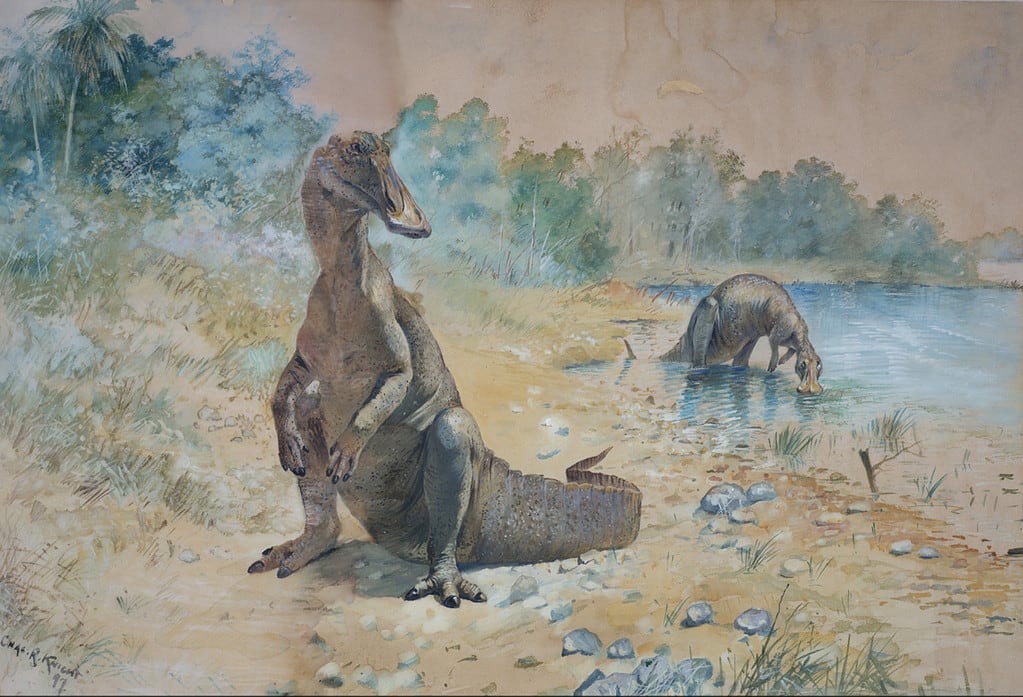
Dinosaurs of the family Hadrosauridae were widespread and are found on most continents. Hadrosaur fossils have been found in North America, Europe, Africa, and Asia. They were also ecologically important large herbivores during the Late Cretaceous Period, although little is known about their early evolution.
In fact, although the hadrosaur is the most common dinosaur (at least in fossil form), researchers are still finding new fossils all the time. Earth sciences curator Pat Druckenmiller led a study that found Hadrosaur fossils in the Prince Creek Formation in Alaska, a unit of rock deposited on the Arctic floodplain about 69 million years ago.
“Today we find these animals in polar latitudes,” Druckenmiller said. “Amazingly, they lived even farther north during the Cretaceous Period. These were the northern-most dinosaurs to have lived during the Age of Dinosaurs. They were truly polar.” Other recent Hadrosaur fossils stem from Japan or Mongolia.
The Hadrosaurus was no small fry. It measured up to 30 feet long and weighed as much as an elephant. But what really caught everyone’s attention was its duck-like bill. The name Hadrosaurus translates to “heavy lizard” or “bulky lizard” in Greek.
Paleontologists think Hadrosaurs likely grazed on horsetails and vegetation close to the ground, rather than browsing for higher-up leaves. This conclusion was based on the evenness of scratches on hadrosaur teeth, which suggested the hadrosaur used the same series of jaw motions over and over again. However, a separate study suggests that the hadrosaur was actually a browser (a herbivore that feeds on leaves, soft shoots, or fruits of high-growing plants), not a grazer. This shows that even for a well-known dinosaur there are still plenty of mysteries to be uncovered.
The most impressive feature of the Hadrosaur is the broad, flattened snout, which resembled the bill of a duck. This unique mouth structure allowed them to effectively strip and process the plants they ate.
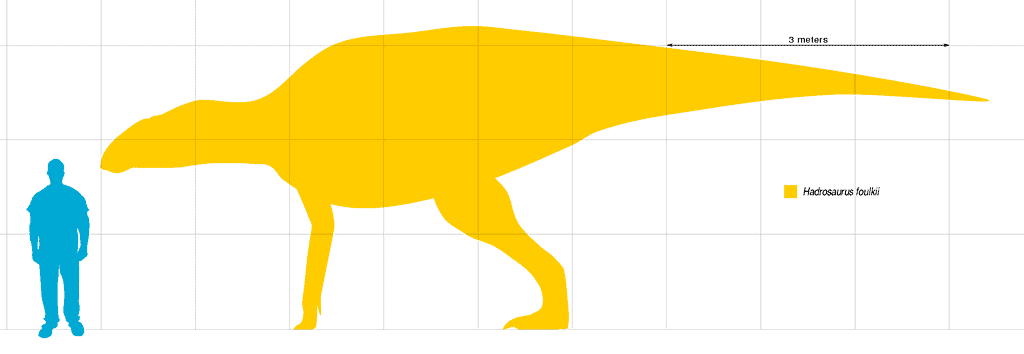
Hadrosaurs had many tightly packed rows of teeth, sometimes with over a thousand individual teeth in their jaws! As they chewed, older teeth would wear down, and new ones would grow in. This dental battery allowed them to efficiently grind tough plant material.
Some species of hadrosaurs had hollow crests on their heads. These crests varied greatly in size and shape between different species. Scientists believe these crests may have been used for communication, possibly allowing the dinosaurs to produce resonating calls. They could also have been used for display purposes, signaling anything from dominance to mating availability.
In terms of appearance, hadrosaurs were covered in scales, and some recent discoveries even indicate the presence of filament-like structures, which are precursors to feathers. While they were not as flashy as some of the predatory dinosaurs of their time, hadrosaurs were fascinating and complex creatures that played a significant role in their ecosystems.
The Hadrosaurus in Popular Culture
You might not find Hadrosaurus toys in every gift shop or see it starring in blockbuster movies, but don’t underestimate its cultural impact. This dinosaur has appeared in novels, documentaries, and even as a Google Doodle. Its story serves as a powerful reminder of the ever-changing nature of scientific understanding.
But perhaps its biggest impact was the scientific one.
The Hadrosaurus didn’t just change how we view dinosaurs; it changed how we view science. Its discovery demonstrated the importance of keeping an open mind and questioning established beliefs. It showed that every fossil has the potential to rewrite history, to challenge our understanding of the natural world. It paved the way for researchers to understand dinosaurs in an unprecedented way.
Hadrosaurus FAQ
Hadrosaurus is a genus of herbivorous dinosaur that lived during the Late Cretaceous period, around 80 million years ago. It belongs to the family of duck-billed dinosaurs, known as hadrosaurids.
Hadrosaurus was bipedal, meaning it primarily walked on its two hind legs. It had a long tail, strong hind limbs, and shorter arms. Its head would have had a beak-like snout, characteristic of hadrosaurids.
Estimates suggest that the average Hadrosaurus was about 25 feet (7.6 meters) long and weighed around 7-8 tons.
The original Hadrosaurus skeleton is on display at the Academy of Natural Sciences in Philadelphia, Pennsylvania. However, most large natural history museums have a Hadrosaurus display.
Conclusion: A Window into the Unknown
So, the next time you visit a museum and stand in awe before a dinosaur skeleton, remember the Hadrosaurus. Think about how its discovery opened up a new world of possibilities, how it challenged the status quo and expanded our understanding of life on Earth.
The Hadrosaurus is more than just bones and fossils; it’s a symbol of human curiosity and our relentless pursuit of knowledge. It’s a testament to the untapped mysteries buried beneath our feet, waiting for a keen observer to unearth them. As science continues to evolve, the Hadrosaurus reminds us of the importance of revisiting and re-evaluating what we know.
It may not be as flashy as the T-Rex or as imposing as the Diplodocus, but the Hadrosaurus is a vibrant thread, connecting us to a world long gone, and urging us to keep exploring the wonders that our planet holds.






